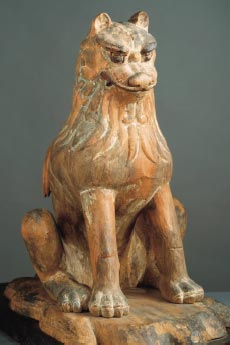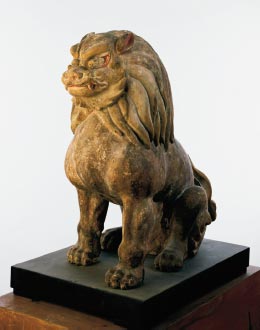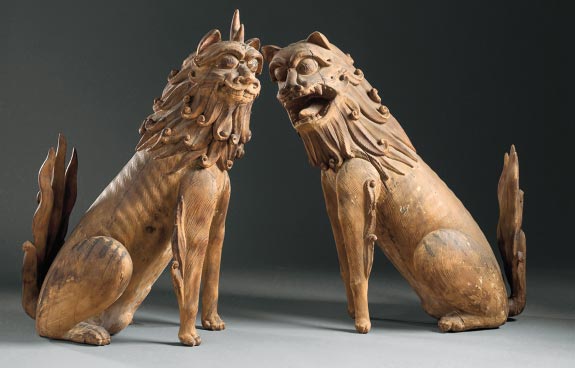
The
mystical beasts known as shishi arrived in Japan and came to be
paired as guardian shishi and komainu that took on the role of
preventing evil from entering sacred spaces such as temples and
shrines. Komainu are generally found at the entrance of shrines or
in the corridors of shrine buildings and are often viewed as
watchdogs, though often they appear with a single horn on their head
and together with the shishi. For this reason, one is known as
shishi, while the other is called komainu. Often, we see the
shishi,
growling fiercely with its mouth open, paired with the komainu,
glaring with its mouth closed, as a and un, which represent the
first and last letters of the Sanskrit alphabet as well as the
beginning and end of all things.

Komainu are mentioned in early Heian-period (794–1185) temple
inventories as “Goryeo dogs”—a term used for large masks similar to
those used in lion dances in bugaku (Japanese court dance and
music). Koma or Goryeo referred to the Goguryeo state, one of the
Three Kingdoms of ancient Korea, and other foreign lands, and the
word komainu meant a mystical, foreign guardian. It may seem that
these creatures should all take the same form, however, diverse
expressions can be found in each period. This exhibition introduces
some of the most distinctive komainu examples.



